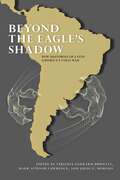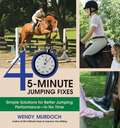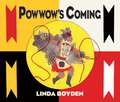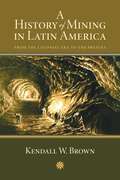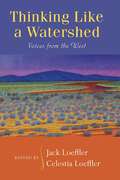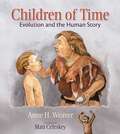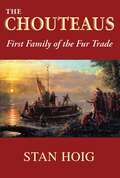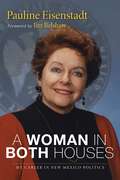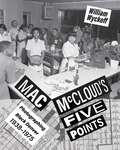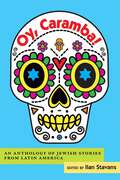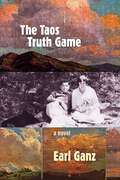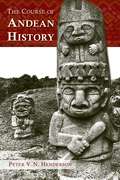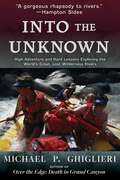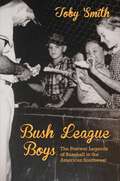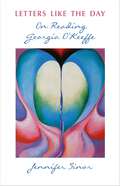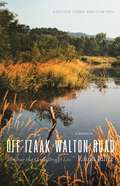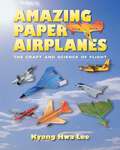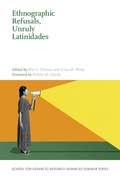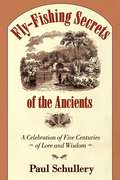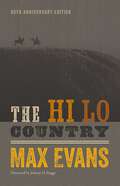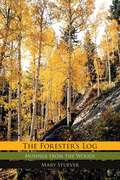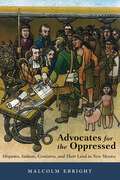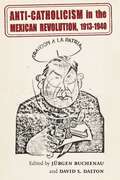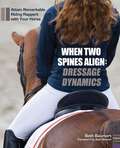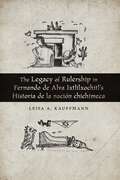- Table View
- List View
Beyond the Eagle's Shadow: New Histories of Latin America's Cold War
by Mark Atwood Lawrence Virginia Garrard-Burnett Julio E. MorenoThe dominant tradition in writing about U.S.–Latin American relations during the Cold War views the United States as all-powerful. That perspective, represented in the metaphor &“talons of the eagle,&” continues to influence much scholarly work down to the present day. The goal of this collection of essays is not to write the United States out of the picture but to explore the ways Latin American governments, groups, companies, organizations, and individuals promoted their own interests and perspectives.The book also challenges the tendency among scholars to see the Cold War as a simple clash of &“left&” and &“right.&” In various ways, several essays disassemble those categories and explore the complexities of the Cold War as it was experienced beneath the level of great-power relations.
40 5-Minute Jumping Fixes
by Wendy MurdochBetter balance in the saddle, improved body control from head to toe, and increased influence with your seat are just a handful of the simple fixes offered in this straightforward training manual for jumping. Most of the suggestions provided require only a few minutes to learn and offer solutions for making jumping more enjoyable for both riders and their horses. By starting and ending each ride with these simple, easy, and effective fixes, equestrians will happily and efficiently replace old habits with new ones and get out of the riding rut we all find ourselves in at some point in our riding career.
Powwow's Coming
by Linda BoydenPowwow's coming, hear the beat?Powwow's coming, dancing feet.Powwow's coming, hear the drum?Powwow's coming, everyone!Frustrated as a schoolteacher not being able to find good instructional materials on American Indians, Linda Boyden has bypassed the tired stereotype of Indians on horseback or hunting game and placed them in today's setting of a powwow. Powwow's Coming provides children with a foundation for understanding and celebrating the enduring culture and heritage of American Indians. Boyden's exquisite cut-paper collage and engaging poem visually place readers within the scenes of a contemporary Native American community while offering a thoughtful look at powwows and their meanings to the Native participants.
A History of Mining in Latin America: From the Colonial Era to the Present (Diálogos Series)
by Kendall W. BrownFor twenty-five years, Kendall Brown studied Potosí, Spanish America's greatest silver producer and perhaps the world's most famous mining district. He read about the flood of silver that flowed from its Cerro Rico and learned of the toil of its miners. Potosí symbolized fabulous wealth and unbelievable suffering. New World bullion stimulated the formation of the first world economy but at the same time it had profound consequences for labor, as mine operators and refiners resorted to extreme forms of coercion to secure workers. In many cases the environment also suffered devastating harm. All of this occurred in the name of wealth for individual entrepreneurs, companies, and the ruling states. Yet the question remains of how much economic development mining managed to produce in Latin America and what were its social and ecological consequences. Brown's focus on the legendary mines at Potosí and comparison of its operations to those of other mines in Latin America is a well-written and accessible study that is the first to span the colonial era to the present.
Thinking Like a Watershed: Voices from the West
by Jack Loeffler Celestia LoefflerThinking Like a Watershed points our understanding of our relationship to the land in new directions. It is shaped by the bioregional visions of the great explorer John Wesley Powell, who articulated the notion that the arid American West should be seen as a mosaic of watersheds, and the pioneering ecologist Aldo Leopold, who put forward the concept of bringing conscience to bear within the realm of &“the land ethic.&”Produced in conjunction with the documentary radio series entitled Watersheds as Commons, this book comprises essays and interviews from a diverse group of southwesterners including members of Tewa, Tohono O&’odham, Hopi, Navajo, Hispano, and Anglo cultures. Their varied cultural perspectives are shaped by consciousness and resilience through having successfully endured the aridity and harshness of southwestern environments over time.
Children of Time: Evolution and the Human Story
by Anne H. WeaverAncient relics--stone tools, bones, footprints, and even DNA--offer many clues about our human ancestors and how they lived. At the same time, our kinship with our human ancestors lies as much in their sense of humor, their interactions with others, their curiosity and their moments of wonder, as it does in the shape of their bones and teeth. And the evolution of human behavior left no direct fossil traces.Children of Time brings this vanished aspect of the human past to life through Anne Weaver's scientifically- informed imagination. The stories move through time, following the lives of long-ago hominins through the eyes of their children. Each carefully researched chapter is based on an actual child fossil--a baby, a five-year- old, a young adolescent, and teenagers. The children and their families are brought to life through illustrator Matt Celeskey's vividly rendered paleoenvironments where they encounter saber-toothed cats, giraffids, wild dogs, fearsome crocodiles, and primitive horses. Their adventures invite readers to think about what it means to be human, and to speculate on the human drama as it unfolds in many dimensions, from social organization and technology to language, music, art, and religious consciousness.Visit the website at www.children-of-time.com.
The Chouteaus: First Family of the Fur Trade
by Stan HoigIn the late eighteenth century, the vast, pristine land that lay west of the Mississippi River remained largely unknown to the outside world. The area beckoned to daring frontiersmen who produced the first major industry of the American West--the colorful but challenging, often dangerous fur trade. At the lead was an enterprising French Creole family that founded the city of St. Louis in 1763 and pushed forth to garner furs for world markets.Stan Hoig provides an intimate look into the lives of four generations of the Chouteau family as they voyaged up the Western rivers to conduct trade, at times taking wives among the native tribes. They provided valuable aid to the Lewis and Clark expedition and assisted government officials in developing Indian treaties. National leaders, tribal heads, and men of frontier fame sought their counsel. In establishing their network of trading posts and opening trade routes throughout the Central Plains and Rocky Mountains, the Chouteaus contributed enormously to the nation's westward movement.
A Woman in Both Houses: My Career in New Mexico Politics
by Pauline EisenstadtThe first woman to serve in both houses of the New Mexico legislature, Pauline Eisenstadt has witnessed many exciting moments in the state&’s political history and made much of that history herself. Her memoir takes readers to the floors of the House and Senate, offering an insider&’s view of how New Mexico&’s government operates—or doesn&’t.&“I always had great respect for [Pauline&’s] integrity, honesty, and leadership, and A Woman in Both Houses does a great job of conveying her character, her concerns, and her profound affection for our state and its citizens.&”—Bill Richardson, former governor of New Mexico&“This colorful book offers a unique view from a seat in both the House and the Senate. It is a poignant memoir of one of New Mexico&’s woman legislator pioneers. Pauline is a true role model for aspiring women leaders in our state and beyond and this book shows us why.&”—Diane Denish, former lieutenant governor of New Mexico&“I recommend A Woman in Both Houses to anyone who enjoys viewing New Mexico politics from an insider&’s perspective.&”—Senator Jeff Bingaman
Mac McCloud's Five Points: Photographing Black Denver, 1938–1975
by William WyckoffThis stunning collection of images celebrates the remarkable career of Burnis “Mac” McCloud, Denver’s premiere Black photographer between 1950 and 1980. His remarkable photographs, focused on Denver’s Five Points community, captured the ordinary lives of African Americans during a period that witnessed the end of Jim Crow segregation and the beginning of the Civil Rights era.Assembled from more than one hundred thousand negatives that McCloud left behind, this collection introduces his creative work to the world beyond the Mile High City. Author William Wyckoff also tells McCloud’s life story, revealing the challenges to and vitality of Denver’s Black community. At a time when much of what McCloud photographed is being swept away by gentrification and urban change, this collection of images preserves a time and place important not only for Denver but for all of Black America.
Oy, Caramba!: An Anthology of Jewish Stories from Latin America
by Ilan Stavans&“Writers from Argentina, Brazil, Peru, Venezuela, Guatemala, Mexico, and other countries represent an ethnically diverse culture with roots in eastern Europe as well as Spain. . . . The anthology includes tales by such masters as Alberto Gerchunoff, . . . a large number of innovative women writers, and some authors more familiar to English-speaking readers.&”—Library Journal&“Reminds us that society south of the border is just as multicultural as in the US, and that Jews have played an important role in it since the time of the Spanish conquest.&”—Publishers WeeklyJewish identity and magical realism are the themes of the tales of adventure and cultural alienation collected here by the leading authority on Jewish Latin American literature. First published in 1994 as Tropical Synagogues: Short Stories by Jewish-Latin American Writers, Ilan Stavans&’s classic anthology is expanded and updated in this new edition.
The Taos Truth Game
by Earl GanzWhen Myron Brinig arrived in Taos in 1933, he thought he was just passing through on his way to a screenwriting job in Hollywood. But Brinig fell in love--with the landscape, the burgeoning art colony that centered around Mabel Dodge Luhan, and especially with Cady Wells, a talented young painter who had left his wealthy family in the East to settle in Taos. Brinig remained in the West off and on for the next twenty years.Earl Ganz centers this entertaining novel on Brinig's conflicted relationships with Taos and its denizens. Myron Brinig, a completely forgotten writer, is brought back to center stage, along with many of the people who made Taos the epicenter of the utopian avant garde in America between the world wars. Among the cast of characters are Frieda Lawrence, Robinson and Una Jeffers, and Frank Waters, with cameo appearances by Gertrude Stein and Henry Roth.The Taos Truth Game reminds us that Americans have historically romped through the surprisingly wide open recreational reserves of marriage, sexuality, and friendship. Mr. Ganz exposes the daily drama of life in Mabel Dodge Luhan's orbit, and offers a rare look at our queer heritage in the American West that goes beyond the usual footnote or erasure. By weaving this pastiche from a forgotten novelist's memoirs, Mr. Ganz delightfully resurrects the truth game and invites us to play a hand.--Karl Olson, PRIDE Inc., Montana's LGBT advocacy organizationEarl Ganz pulls off the impossible trick. He raises the famous dead and restores them not just to animated life, but to the full psychological and spiritual life of the living. The Taos Truth Game is a major literary achievement. How Ganz manages to do this is one of fiction writing's enduring and humbling mysteries. This book will have a wide and enthusiastic audience, starting with me.--Rick DeMarinis, author of Apocalypse
The Course of Andean History (Diálogos Series)
by Peter V. HendersonThe only comprehensive history of Andean South America from initial settlement to the present, this useful book focuses on Colombia, Ecuador, Peru, and Bolivia, the four countries where the Andes have played a major role in shaping history.Although Henderson emphasizes the period since the winning of independence in 1825, he argues that the region&’s republican history cannot be explained without a clear understanding of what happened in the pre-Hispanic and colonial eras Henderson carefully explores the complex relationship between the Andean peoples and their land up until the fall of the Inka Empire in 1532 before addressing the Spanish conquest and the colonial aftermath, emphasizing the syncretism often unwillingly forced upon the original inhabitants of the region. His account of the nineteenth century discusses the attempts of the Andean elite to fashion modern nation-states in the face of many divisive factors, including race. The final chapters carry the story from 1930 to the present as the Andean countries debated different ways to create a more inclusive and prosperous society.
Into the Unknown: High Adventure and Hard Lessons Exploring the World's Great, Lost Wilderness Rivers
by Michael P. GhiglieriVeteran wilderness guide Michael P. Ghiglieri takes you into the unknown—among white-water rapids, crocodiles, hippos, gorillas, lions, and impossible waterfalls. His riveting memoir not only serves up true high adventure, it also presents the ecology, natural history, conservation (or the lack of it), and exploration history of nine far-flung wilderness regions across the globe—including the never-to-be-repeated white-water run on the Colorado River through the Grand Canyon during the Bureau of Reclamation’s 1983 super flood of ninety-seven thousand cubic feet per second; the first summit-to-sea descent of the Alas River exploring Sumatra’s new Gunung Leuser National Park, a last redoubt for wild orangutans and other rare species; and the “impossible” run of the Alsek River from the Yukon to Alaska in the world’s largest international conservation area.Into the Unknown reveals what the natural world looks like through a professional’s eyes during “adventure” travel, when things start sliding toward the edge. This insider memoir recounts ten sagas of extreme expeditions into Earth’s most amazing wilderness regions to illustrate their realities, science, allure, history, risks to life and limb, and ultimate fates. Many of these regions have now vanished to “progress.” Others are imperiled. Only a few are protected. But all are, or were, places where exotic beauty and danger are inseparable.
Bush League Boys: The Postwar Legends of Baseball in the American Southwest
by Toby SmithThis loving tribute to the defunct minor league teams of New Mexico and west Texas resurrects a forgotten period of baseball history. Through oral histories of players, umpires, fans, sportswriters, and team officials, Toby Smith brings to life the West Texas–New Mexico League, the Longhorn League, the Southwestern League, and the Sophomore League from 1946 to 1961, when the last of them folded. Star players Joe Bauman and Bob Crues get special attention, along with assorted brawls, a fatal beaning incident, home runs, and marriages conducted at home plate. Anyone who loves baseball will enjoy this delightful book.
Letters Like the Day: On Reading Georgia O'Keeffe
by Jennifer SinorGeorgia O&’Keeffe mistrusted words. She claimed color as her language. Nevertheless, in the course of her long life, the great American painter wrote thousands of letters—more than two thousand survive between her and her husband, Alfred Stieglitz, alone. Jennifer Sinor&’s Letters Like the Day honors O&’Keeffe, her modernist landscapes, and, crucially, the value of letter writing. In the painter&’s correspondence, we find an intimacy with words that is all her own. Taking her letters as a touchstone, Sinor experiments with the limits of language using the same aesthetic that drove O&’Keeffe&’s art. Through magnification, cropping, and juxtaposition—hallmarks of modernism—Sinor explores the larger truths at the center of O&’Keeffe&’s work: how we see, capture, and create. Letters Like the Day pursues the highest function of art—to take one&’s medium to the edge and then push beyond.
Off Izaak Walton Road: The Grace That Comes Through Loss (River Teeth Literary Nonfiction Prize Series)
by Laura JulierLoss and sorrow can overwhelm even the strongest person, forcing them to reckon with their emotions whether they want to or not. In this extraordinary debut, Laura Julier recounts her reckoning, which took place in an old cabin tucked away on a hidden and forgotten gravel road along the Iowa River. In company with silence and snow, with eagles, owls, and a host of other birds, Julier finds solace and begins to emerge from the dark corners of grief. Over time, she comes to understand she cannot bury grief or turn aside from loss but must walk in its presence, awake and humble, until, at last, she finds her own wholeness within it.
Amazing Paper Airplanes: The Craft and Science of Flight
by Kyong Hwa LeeIn this book Kyong Hwa Lee combines the art of origami and the science of flight to create unique paper airplane designs for aviation enthusiasts of all ages. Featuring thirty-two designs, Amazing Paper Airplanes showcases models resembling real-world aircraft, including the F-22 fighter jet, a P-51 World War II plane, the Convair F-102 Delta Dagger—the first supersonic delta-wing interceptor airplane of the US Air Force—and more. For these models, Lee provides information along with an image of the real plane to encourage interest in aerospace technology. Every design has been flight-tested and presents complete step-by-step folding instructions. In addition to showing basic and advanced folding techniques and providing templates for each plane, the author explains the theory behind flight and offers tips to fine-tune paper airplanes for optimal flying.
Ethnographic Refusals, Unruly Latinidades (School for Advanced Research Advanced Seminar Series)
by Alex E. Chávez and Gina M. PérezThe contributors in Ethnographic Refusals, Unruly Latinidades highlight the value of &“radical inclusion&” in their research and call for a critical self-reflexivity that marshals the power of bearing witness to move from rhetoric to praxis in support of these methodologies within anthropological perspectives. The essays in this collection do not offer simple solutions to histories of colonialism, patriarchy, and misogyny through which gender binaries and racial hierarches have been imposed and reproduced, but rather provide a crucial opportunity for reflection on and continued reimagination of the contours of Latinidad. These scholars deploy Latinx strategically as part of ongoing dialogues, understanding that their terminologies are inherently imprecise, contested, and constantly shifting. Each chapter explores how Latinx ethnographers and interlocutors work together in contexts of refusal—ever mindful of how power shapes these encounters and the analyses that emerge from them—as well as the extraordinary possibilities offered by ethnography and its role in ongoing social transformation.
Fly-Fishing Secrets of the Ancients: A Celebration of Five Centuries of Lore and Wisdom
by Paul SchulleryModern fly-fishing is only the latest chapter in a two-millennia saga of technological creativity and passionate observation of the natural world. In Fly-Fishing Secrets of the Ancients, historian-naturalist Paul Schullery explores the earlier chapters in that saga and unearths a host of provocative theories, techniques, and insights that helped shape the modern fly-fisher. Schullery demonstrates that whether we're looking for a good fish story, a clearer understanding of why we fish the way we do, or even a way to improve our own sport, we ignore our elders at our peril.Fly-Fishing Secrets of the Ancients offers the beginning fly-fisher an unprecedented opportunity to come to terms with some of the sport's most fundamental theoretical and practical challenges. It offers the expert fly-fisher a chance to test current angling dogma--and his or her own pet theories--against that of the sport's greatest past masters. And it offers all readers a fresh, probing, and often-humorous take on the great endless fish story we perpetuate and enrich every time we cast a fly.
The Hi Lo Country, 60th Anniversary Edition
by Max EvansAt its heart, The Hi Lo Country is the story of the friendship between two men, their mutual love of a woman, and their allegiance to the harsh, dry, achingly beautiful New Mexico high-desert grassland. The story is told by Pete, a young ranch hand, whose best friend is Big Boy Matson. Together they drink, gamble, fight, work, and rodeo. They both fall hard for a married woman—the attractive, bored, and dangerous Mona.When it was first published in 1961, the novel was both a celebration and an elegy. It captured something jagged and authentic in the West, and it caught the attention of Hollywood—notably Sam Peckinpah, who spent twenty years trying to make a movie of this multilayered and plainspoken novel. It would take another twenty years for Martin Scorsese and Stephen Frears to finally do it. Now in a special 60th anniversary edition, The Hi Lo Country continues to tell a quintessential story of the people and the land found in the American West.
The Forester's Log: Musings from the Woods
by Mary StueverWhen Mary Stuever graduated from forestry school in the early 1980s, her profession was facing tremendous challenges as the nation's forests were poised for serious decline from catastrophic wildfires, insect outbreaks, and suburban encroachment. Stuever captured this transition over the last few decades in her syndicated monthly column The Forester's Log. Originally penned for newspapers in rural forested communities in the Southwest, the column has found its way into various magazines, newsletters, anthologies, and Web sites.Stuever's career involves firefighting, fire rehabilitation, timber sale administration, environmental education, and many other aspects of forest management. Through her work with native tribes, local, state, and federal agencies, and private landowners, Stuever focuses on the important bond between land and people. With an inspiring and informative style, Stuever's tales weave fresh insight into forest issues. Her writings, collected here for the first time, tell the poignant story of places, people, and experiences that have shaped her passion while offering a rare glimpse of forestry in the Southwest at the turn of the new millennium.
Advocates for the Oppressed: Hispanos, Indians, Genízaros, and Their Land in New Mexico
by Malcolm EbrightStruggles over land and water have determined much of New Mexico&’s long history. The outcome of such disputes, especially in colonial times, often depended on which party had a strong advocate to argue a case before a local tribunal or on appeal. This book is partly about the advocates who represented the parties to these disputes, but it is most of all about the Hispanos, Indians, and Genízaros (Hispanicized nomadic Indians) themselves and the land they lived on and fought for.Having written about Hispano land grants and Pueblo Indian grants separately, Malcolm Ebright now brings these narratives together for the first time, reconnecting them and resurrecting lost histories. He emphasizes the success that advocates for Indians, Genízaros, and Hispanos have had in achieving justice for marginalized people through the return of lost lands and by reestablishing the right to use those lands for traditional purposes.
Anti-Catholicism in the Mexican Revolution, 1913-1940 (Diálogos Series)
by Jürgen Buchenau and David S. DaltonAnti-Catholicism in the Mexican Revolution, 1913–1940 examines anti-Catholic leaders and movements during the Mexican Revolution, an era that resulted in a constitution denying the Church political rights. Anti-Catholic Mexicans recognized a common enemy in a politically active Church in a predominantly Catholic nation. Many books have elucidated the popular roots and diversity of Roman Catholicism in Mexico, but the perspective of the Church’s adversaries has remained much less understood.This volume provides a fresh perspective on the violent conflict between Catholics and the revolutionary state, which was led by anti-Catholics such as Plutarco Elías Calles, who were bent on eradicating the influence of the Catholic Church in politics, in the nation’s educational system, and in the national consciousness. The zeal with which anti-Catholics pursued their goals—and the equal vigor with which Catholics defended their Church and their faith—explains why the conflict between Catholics and anti-Catholics turned violent, culminating in the devastating Cristero Rebellion (1926–1929).Collecting essays by a team of senior scholars in history and cultural studies, the book includes chapters on anti-Catholic leaders and intellectuals, movements promoting scientific education and anti-alcohol campaigns, muralism, feminist activists, and Mormons and Mennonites. A concluding afterword by Matthew Butler, a global authority on twentieth-century Mexican religion, provides a larger perspective on the themes of the book.
When Two Spines Align: Dressage Dynamics
by Beth BaumertWithin riding there exists a fundamental conflict of interest: The rider needs to have control—her confidence depends on her ability to control the balance of her own body as well as that of her very powerful horse. The horse, by nature, needs to feel free—free in both mind and body to express himself through physical movement.In When Two Spines Align: Dressage Dynamics, author Beth Baumert, writer and editor at the internationally recognized equestrian magazineDressage Today, resolves the freedom-control enigma by taking a close look at the individual components that make up riding and dressage. Beth provides insight gleaned from years of working with the best riders, trainers, and judges in the dressage world, and details practical ways riders can learn to harness the balance, energies, and forces at play when they're in the saddle.Readers will discover how to use positive tension and what the author calls the four physical Powerlines—Vertical, Connecting, Spiraling, and Visual—to become balanced and effective in the saddle. Readers will then find ways to understand and manage the horse's balance and coordination challenges, including the fact that he is inherently crooked and naturally inclined to do too much with his front end and not enough with his hind.Ultimately, the rider learns to regulate and monitor the horse's rhythm, energy, flexion, alignment, bend, the height and length of his neck, and, finally, his line of travel by properly aligning her spine with his. When the center of gravity of a balanced rider is directly over the center of gravity of a balanced horse, that place where two spines align becomes the hub for rider and horse harmony—a dynamic and remarkable riding rapport that yields beautiful performance.
The Legacy of Rulership in Fernando de Alva Ixtlilxochitl's Historia de la nación chichimeca
by Leisa A. KauffmannIn this book Leisa A. Kauffmann takes an interdisciplinary approach to understanding the writings of one of Mexico&’s early chroniclers, Fernando de Alva Ixtilxochitl, a bilingual seventeenth-century historian from Central Mexico. His writing, especially his portrayal of the great pre-Hispanic poet-king Nezahualcoyotl, influenced other canonical histories of Mexico and is still influential today.Many scholars who discuss Alva Ixtlilxochitl&’s writing focus on his personal and literary investment in the European classical tradition, but Kauffmann argues that his work needs to be read through the lens of Nahua cultural concepts and literary-historical precepts. She suggests that he is best understood in light of his ancestral ties to Tetzcoco&’s rulers and as a historian who worked within both Native and European traditions. By paying attention to his representation of rulership, Kauffmann demonstrates how the literary and symbolic worlds of the Nahua exist in allegorical but still discernible subtexts within the larger Spanish context of his writing.
